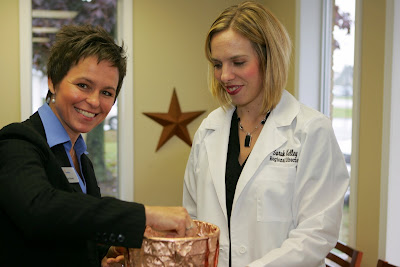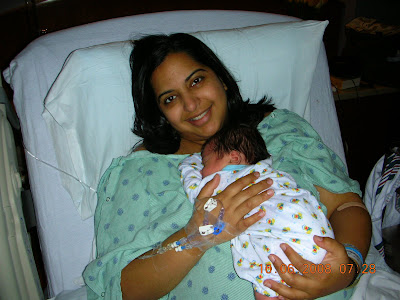Friday, October 24, 2008
There was an article in the New York Times yesterday about hearing loss and hearing aids. I thought it highlighted some really good points in a non-biased way about our industry. I have copied it below or you can visit there website here.
October 23, 2008
Picking Up Good Vibrations (With Limitations)
By JULIE CONNELLY
HEARING aids provide many benefits, but they do not restore hearing to normal, and that is a tough lesson to learn for many people who use them.
“Regardless of how good they are, they never match the quality of your hearing at its best,” said William McKenna, a lawyer and former deputy district attorney in Westchester County, N.Y., who has been wearing hearing aids in both ears for nearly 20 years. “Recently my audiologist asked me how good my hearing was on a scale of 1 to 10. I said, 8 ½.”
People who use hearing aids, on average, live with hearing loss for seven years before resigning themselves, usually around age 70, to using a device, according to the Hearing Loss Association of America. “You are in a position where you’ve been struggling, and you get tired of asking people to repeat themselves,” Mr. McKenna said.
Most people with hearing loss eventually acknowledge that “the standard becomes hearing better than you heard before,” said Eduardo Bravo, an audiologist with Audio Help Associates in Manhattan.
Today, baby boomers account for 10 million of the 31.5 million Americans with hearing loss, according to the Better Hearing Institute, a nonprofit educational organization, and many hearing experts attribute this to listening to overly loud rock music.
“The noise exposure just builds up, and with baby boomers it’s been a lifetime of amplified music,” said John M. Burkey, director of audiology at the Lippy Group for Ear Nose and Throat, in Warren, Ohio. Most of these boomers are still in the work force and can’t afford not to hear.
“I had to have the best hearing I could because I wanted to remain a psychologist,” said Teresa Cochran of Alexandria, Va., who has a cochlear implant in one ear but depends on a hearing aid in the other to augment her range of hearing. “I see patients six hours a day during weekdays, and I need to be alert to what they say.”
Why do hearing aids fall short of restoring hearing to the equivalent of 20/20 vision? Because there is no cure for sensorineural hearing loss, by far the most common problem. It is caused by degeneration of the nerve cells, known as hair cells, that line the cochlea, the inner ear structure that looks like a snail.
The hair cells transmit signals received from the bones in the middle ear to the auditory nerve, which sends them to the brain. Aging and exposure to noise cause hair cells to die off, starting with those that transmit high-frequency sounds like “s” and “t.” Medical science has not yet found a way to repair this nerve damage.
“Birds and fish can regenerate their hair cells, and we’ve done it on frogs,” said Dr. John House, president of the House Ear Institute, a nonprofit research group in Los Angeles, which is working on hair-cell regeneration. “But taking a dead or damaged nerve and replacing it — that’s 5 or 10 years off.”
Or even 20, in the view of Mr. Burkey, who is also the author of “Baby Boomers and Hearing Loss: A Guide to Prevention and Care.” Hair-cell regeneration is “going to be the future” of hearing technology, he said.
Meanwhile, consumers expect the devices to work as well as glasses or contact lenses. But eyes pose a different problem, one that is more often readily solved. “There is a perfectly good optic nerve,” Dr. House said. “The only problem is that the focus is not perfect on the retina. Glasses focus the image on the retina.”
With the ear, the problem is the nerve itself. But hearing aids can do a lot, especially for those with mild to moderate high-frequency loss, a group that encompasses most people who are hard of hearing.
Digital technology allows fine-tuning to address the wearer’s specific loss rather than amplifying sounds indiscriminately, a common complaint about older hearing aids.
Feedback cancellation eliminates most of the whistling that bedevils wearers and distracts many others at movies and concerts. Open-fit hearing aids, tucked discreetly behind the ear with an almost invisible plastic tube going into the canal, offer a more natural sound by allowing low-frequency sounds to penetrate the ear while amplifying the high-frequency ones. A telecoil, a small device that can be embedded in the hearing aid to eliminate feedback, can improve hearing on the telephone.
And the entire package can be encased in colors or leopard-skin plastic for the fashion-forward.
A problem that remains unresolved is background noise. While directional microphones reduce sounds from behind the wearer and amplify those in front, no technology can pull the one voice you want to hear from the babble of other voices.
“Wearers get frustrated,” said Brenda Battat, associate executive director of the Hearing Loss Association of America. “Their reaction is, ‘I still can’t hear at a party, and I just spent $4,000 for these things.’ ”
Because digital hearing aids are tiny computers that can be adjusted for subtle changes, wearers must keep returning to the audiologist who sold them the devices until they feel comfortable. Sometimes, the process takes months.
Typically, the price of a hearing aid — $1,986 per ear on average in 2007, according to Hearing Aid Journal — includes two or three return visits to the audiologist during a 30- to 45-day trial period. Even after the trial period, many audiologists do not charge for adjustments.
“We have a number of patients who come back and back,” said Dr. Bravo, the Manhattan audiologist. “We stay with them until they are happy.”
Medicare does not pay for hearing aids, although it does cover cochlear implants. Coverage among insurers varies, but most do not pay for hearing aids.
Dr. Cochran, the psychologist, suggested that people with hearing loss try to take control of their environments. She asks for a quiet table in restaurants and sits with her back to the wall to eliminate distracting noise behind her. And she reminds herself: “Your hearing becomes better, but it does not become perfect.”
Wednesday, October 22, 2008
Monday, October 13, 2008
Hearing Aid Stickers
I finished testing someone today and found that they had absolutely no hearing loss. As he was leaving he asked Barb, (PCC in Lisle), if he could have a badge. As in "I passed my hearing test today and get to wear this sticker around now!" This would be fine if the patient were say under 10 years old but he was at least 44 years old and dead serious!
"Can I have a Badge?"
Sure, pick one out and while your at it why not stop at the store on your way home and purchase a big box of manliness because you have a serious problem.




"Can I have a Badge?"
Sure, pick one out and while your at it why not stop at the store on your way home and purchase a big box of manliness because you have a serious problem.




Subscribe to:
Comments (Atom)

























